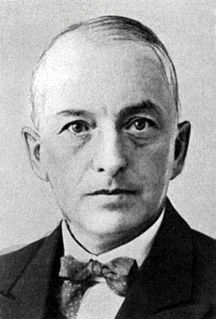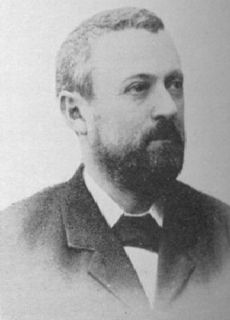
Thomas Fearnley (16 January 1880 – 10 January 1961) was a Norwegian shipping magnate, sports executive and philanthropist. He was a prominent figure in Norwegian shipping in the first half of the 20th century. [1]

Thomas Fearnley (16 January 1880 – 10 January 1961) was a Norwegian shipping magnate, sports executive and philanthropist. He was a prominent figure in Norwegian shipping in the first half of the 20th century. [1]
Fearnley was born at Kristiania (now Oslo), Norway. He was the son of shipping magnate Thomas Nicolay Fearnley (1841–1927) and his wife Elisabeth Young (1854–1932). He was a member of the Fearnley family and was the grandson of romantic painter Thomas Fearnley and paternal grandnephew of professor Carl Frederik Fearnley (1818-1890). He was the maternal great-grandson of Nicolai Andresen (1781–1861) founder of Andresens Bank A/S. His brother N. O. Young Fearnley (1881–1961) was a businessman and landowner. His sister Cecilie Fearnley (1878–1902) was married to Ebbe Carsten Morten Astrup (1876–1955). [2] [3] [4] [5]

Oslo is the capital and most populous city of Norway. It constitutes both a county and a municipality. Founded in the year 1040 as Ánslo, and established as a kaupstad or trading place in 1048 by Harald Hardrada, the city was elevated to a bishopric in 1070 and a capital under Haakon V of Norway around 1300. Personal unions with Denmark from 1397 to 1523 and again from 1536 to 1814 reduced its influence, and with Sweden from 1814 to 1905 it functioned as a co-official capital. After being destroyed by a fire in 1624, during the reign of King Christian IV, a new city was built closer to Akershus Fortress and named Christiania in the king's honour. It was established as a municipality (formannskapsdistrikt) on 1 January 1838. The city's name was spelled Kristiania between 1877 and 1897 by state and municipal authorities. In 1925 the city was renamed Oslo.

Fearnley is a Norwegian family of shipping magnates. The family is of English origin, originating in Heckmondwike in Yorkshire. The merchant Thomas Fearnley (1729–1798) migrated from Hull in England to Frederikshald in Norway in 1753. His son, merchant Thomas Fearnley (1768–1834), was married to Maren Sophie Paus (1782–1838). They were the parents of romantic painter Thomas Fearnley and astronomer Carl Frederik Fearnley.
He attended Kristiania Cathedral School and trading school in Leipzig in 1896 from 1898. In 1901, he was also employed at the partnership of Fearnley & Eger in Christiania, the shipping company founded by his father in 1869. He became co-owner in 1908. He was Chief Executive Officer in 1921. He made his comamy one of the country's leading shipping companies, while at the same time being a key player in national shipowners' cooperation. Fearnley was vice-chairman of Kristiania Shipowners Association 1910-12. He became a member of the Central Board of the Norwegian Shipowners Association in 1912, serving as Vice President 1915-18 and President 1918-21. In 1931, his nephew Nils Ebbessøn Astrup (1901-1972) entered the firm as a co-owner of Fearnley & Astrup (now Astrup Fearnley Group). In 1941, Fearnley pulled out of the active management of Fearnley & Astrup. [6] [7] [8]

Schola Osloensis, known in Norwegian as Oslo katedralskole and more commonly as "Katta" is a selective upper secondary school located in Oslo, Norway. The school offers the college preparatory studiespesialisering of the Norwegian school system. Oslo Cathedral School is one of four schools in Norway which can trace its origins directly to the Middle Ages and is generally regarded as one of the most prestigious schools in Norway. It celebrated its 850-year anniversary in 2003.

Leipzig is the most populous city in the federal state of Saxony, Germany. With a population of 581,980 inhabitants as of 2017 it is Germany's tenth most populous city. Leipzig is located about 160 kilometres (99 mi) southwest of Berlin at the confluence of the White Elster, Pleiße and Parthe rivers at the southern end of the North German Plain.
Fearnley was a co-founder of the gentlemen's skiing club SK Fram in 1889, and received honorary chairmanship. In 1909 he took the initiative for the formation of the Norwegian Lawn Tennis Association (Norges Tennisforbund). He was among the founders of the Norwegian Jockey Club (Norsk Jockeyklub) in 1932 and was the president of the club until 1940. From 1927 to 1950, he was the permanent Norwegian member of the International Olympic Committee (IOC). Fearnley became Honorary Member of the IOC 1951. In 1950, he founded the Fearnley Cup to honor an amateur sport club or a local amateur sport association based upon meritorious achievement in the service of the Olympic Movement. He originated the Fearnley Olympic Award in connection with the 1952 Winter Olympics in Oslo. The award is given for outstanding achievements by a Norwegian Olympic participant. [9] [10] [11]
Skiklubben Fram was a Norwegian skiing club, based in Oslo but with its sporting facilities in Vestre Aker—and from 1902 to 1923 in Oppland. Fram was founded in 1889, and after a down period around 1900 it was refurbished as an exclusive gentlemen's social club in a skiing setting.

The International Olympic Committee is a non-governmental sports organisation based in Lausanne, Switzerland. Created by Pierre de Coubertin and Demetrios Vikelas in 1894, it is the authority responsible for organising the modern Summer and Winter Olympic Games.

The Fearnley Olympic Award is a Norwegian Athletics Award. The award is given for outstanding achievements by a Norwegian Olympic participant. No competitor may win the award more than once.
In 1911, he married Benedicte Rustad (1886–1976). Thomas Fearnley received a number of Norwegian and foreign orders. In 1921, he was appointed a Knight 1st grade in the Order of St. Olav and in 1960 was awarded the Commander Cross. He was awarded the Order of the Dannebrog, Order of Vasa, Order of the British Empire and the French Legion of Honour. [8]

The Royal Norwegian Order of Saint Olav is a Norwegian order of chivalry instituted by King Oscar I on August 21, 1847. It is named after King Olav II, known to posterity as St. Olav.

The Order of the Dannebrog is a Danish order of chivalry instituted in 1671 by Christian V. Until 1808, membership in the order was limited to fifty members of noble or royal rank who formed a single class known as White Knights to distinguish them from the Blue Knights who were members of the Order of the Elephant. In 1808, the Order was reformed and divided into four classes. The Grand Commander class is reserved to persons of princely origin. It is only awarded to royalty with close family ties with the Danish Royal House. The statute of the Order was amended in 1951 by a Royal Ordinance so that both men and women could be members of the Order.

The Royal Order of Vasa is a Swedish order of chivalry, awarded to citizens of Sweden for service to state and society especially in the fields of agriculture, mining and commerce. It was instituted on 29 May 1772 by King Gustav III. It was unrestricted by birth or education and could therefore be awarded to anyone. It was the most junior of all the Swedish orders. It was often awarded to Norwegian subjects of the dual monarchy until Oscar I founded the Norwegian Order of St. Olav in 1847. Since 1974 the order is no longer conferred: officially it has been declared as "dormant", along with the Order of the Sword.

Leif Høegh was a Norwegian shipowner. He founded the international shipping company, Leif Höegh & Co in 1927.

Ludvig Mariboe Benjamin Aubert was a Norwegian professor, jurist and government official.

Nils Christian Egede Hertzberg was the Norwegian theologian, educator and politician.

Nikolai Astrup was a Norwegian painter. Astrup was a distinctive, innovative artist noted principally for his intense use of color depicting the lush landscapes of Vestlandet featuring the traditional way of life in the region.
Olaf Christian Ditlev-Simonsen, Jr. was a Norwegian footballer, sports administrator and businessperson.
Peter Collett Solberg was a Norwegian businessperson and politician for the Conservative Party. He served three terms in the Norwegian Parliament, and played an important role in the companies And. H. Kiær & Co and Norsk Elektrisk & Brown Boveri.

Axel Heiberg was a Norwegian diplomat and financier as well as a patron of the arts and sciences.

Nils Olav Young Fearnley was a Norwegian businessperson and landowner.

Carl Emil Christian Bonnevie was a Norwegian jurist and peace activist. He also served as a Member of the Norwegian Parliament.
Nils Aall Krag was a Norwegian businessman, inventor and industrialist. He was the founder of the firm, Krag Maskinfabrikk A/S, now a division of Pitney Bowes.
Hans Barthold Andresen Butenschøn was a Norwegian businessperson.

Nils August Andresen Butenschøn was a Norwegian businessperson.

Mogens Thorsen was a Norwegian shipowner and philanthropist.

Thomas Nicolay Fearnley was a Norwegian shipping magnate, industrialist and philanthropist.

Morten Wilhelm Wilhelmsen, known as Wilh. Wilhelmsen was a Norwegian shipping magnate.
Dag Klaveness was a Norwegian ship-owner.

Nicolay August Andresen was a Norwegian banker. He was born in Christiania, a son of Nicolai Andresen and Engel Johanne Christiane Reichborn. He was a brother of merchant and factory owner Johan Henrik Andresen, and of silver mines manager Carl Ferdinand Andresen.

Skøyenparken is a park in the neighborhood of Skøyen in the borough of Ullern in Oslo, Norway.
| This Norwegian business biographical article is a stub. You can help Wikipedia by expanding it. |